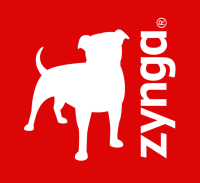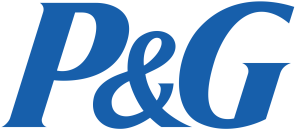Backlink Analyzer Tool
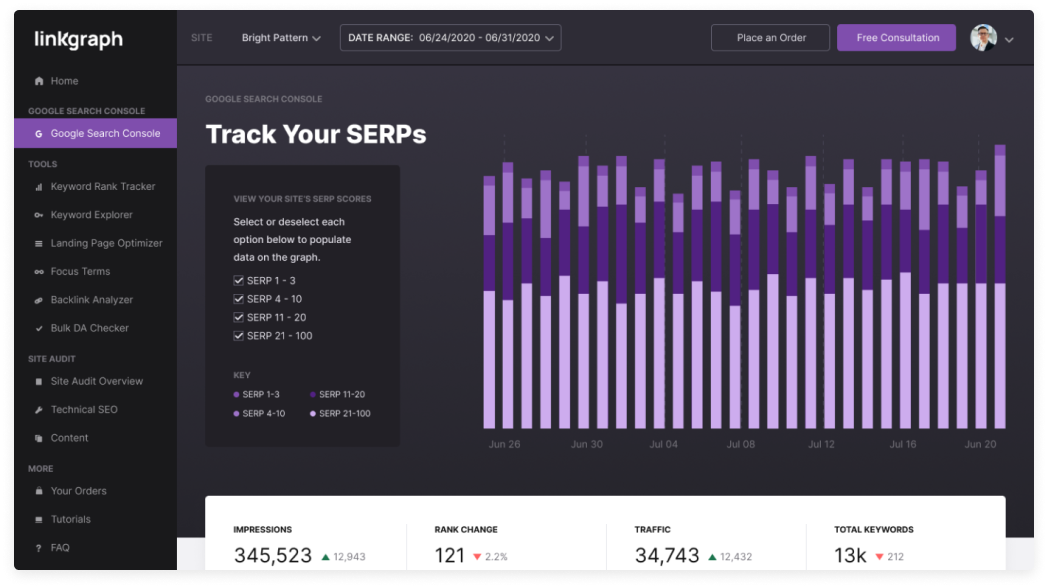
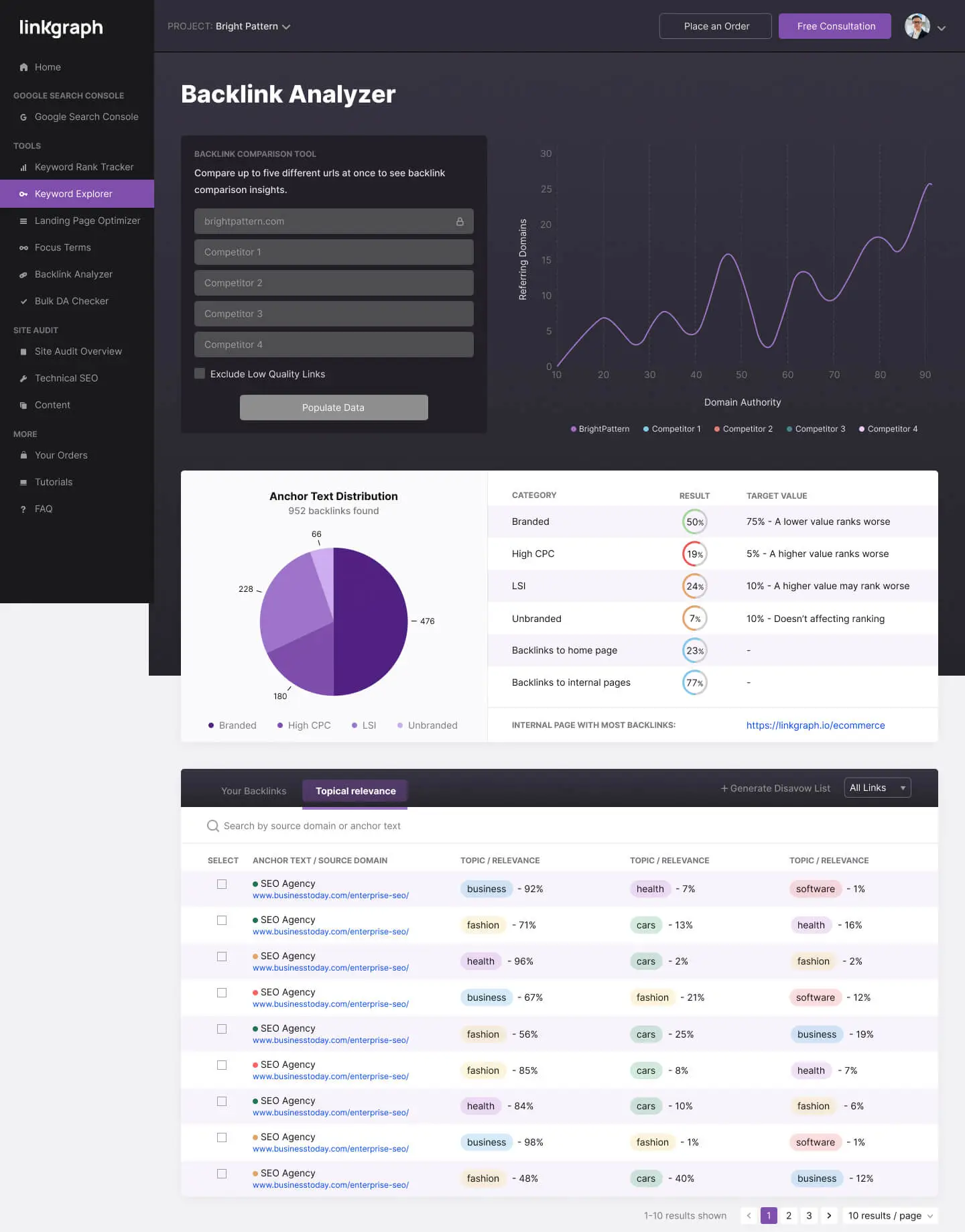
What is the Toxic Backlinks Checker?
The toxic backlink checker tool allows users to check domain and page-level metric information for a specific url and identify any toxic links or poor quality links in their own backlink profile. The tool is also particularly useful for those sites seeking comprehensive information about their backlink profile in order to improve backlink strategy or link building campaigns.
You can also view granular link data for each domain. Getting a detailed report from a link checker helps webmasters know what next steps they’ll need to perform if a toxic link detox is needed. Spammy or low-quality links can damage your seo efforts and harm your site’s rankings, so analyzing your backlink profile regularly is important for any site who wants to rank higher and more often in search engine results pages.
Whether you want to know the number of backlinks in your backlink profile, the number of referring domains, or your anchor text distribution, this backlink analysis tool provides all of the valuable link information you need to polish your backlink portfolio and identify new opportunities for your offsite SEO strategy.
Backlink Analysis
Backlinks are valuable because they’re essentially votes of confidence from other websites. Backlinks, also known as inbound links or incoming links, are created when one website links to another. All external links, or links that point to an external domain, are considered backlinks. The higher the authority of the site linking to your domain, the more valuable that link will be as part of your backlink profile.
Building new backlinks is a crucial part of your off-site SEO strategy. Generally speaking, dofollow backlinks from trustworthy and popular sites are going to be the most important for a high-quality, complete backlink profile. By improving the number and quality of the website’s linking to yours, you improve the overall reputation and trustworthiness of your site in the eye’s of Google’s index and proprietary ranking algorithms.
Backlinks are important for search engines because they can indicate content that is worth linking to. Googles’ rank signals respond to high-quality content, so if many external sites are linking to your domain name, then it’s likely that other people on the internet find your content valuable. As a result, you’ll have an easier time boosting your site in the SERPs.
Not all backlinks provide the same value or transfer the same amount of search equity between sites. For example, links with a nofollow attribute, Sponsored attribute, or User-Generated content attribute pass along significantly less equity than dofollow links. Separately, spammy sites or sites using deceptive anchor text practices can actually have a negative impact on your rankings. These are considered toxic links.
Naturally, toxic links or any low-quality links from untrusted sites will damage your portfolio, and accruing enough of these could put you in need of a link detox. Any dofollow backlinks will pass link equity between sites, which can be good for your trust flow, but it’s important not to dismiss the value of nofollow links, as just having a positive mention on other high-quality sites can give you a boost.
Of course, you won’t just be collecting backlinks from other sites—you’ll also be giving out backlinks yourself, and the way you go about this matters. The links you create to other sites will differ in value due to the authority of the site you’re linking to, but there are other factors as well. These can include the anchor text you use, whether you choose a DOFOLLOW link or a NOFOLLOW link, and any meta tag associated with the site. While not the topic of this piece, outbound linking can also help improve the rankings of your website.
There are several important metrics to monitor when trying to improve search rankings for your site. The one that webmasters have traditionally focused on is site traffic, even though traffic is a lagging indicator for search rankings. As an aggregate metric, organic traffic is simple to check at a glance in Google Analytics and can give you a sense of how your entire domain is performing. However, this metric does not help you understand which keywords are leading users to click into your site.
To learn more about your exact SERP visibility, you’ll need Google tools like Google Search Console. Google Search Console is the truest data available about your keyword rankings on the internet. Tools like Ahrefs and Semrush do not provide up-to-the-day data, so only search console can give you an exact understanding of how your domain is being positioned in the SERPs for individual keywords.
The more often Google shows your domain in the search results, the more likely you are to see your individual rankings increase and the more likely it is that your domain is appearing as a result for a broader range of searches. Outside of the Google product suite, you should track your site’s domain authority. The Moz DA metric scores domains on a scale of 1-100 based on their overall search equity, which they call domain authority (DA). Domain Authority is a leading indicator for search visibility improvements. Majestic’s trust flow and citation flow metrics can also provide an idea of how Google looks at your website’s overall site authority.
It is worth noting that the way DA and other metrics are determined can change from time to time, so it’s worth keeping updated. On that note, Google algorithms can also change, which can significantly affect rankings. One of the most notable algorithm updates was Penguin in 2012, which sought to derank spammy sites from its search results. Staying up to date on all changes to Google is crucial for SEO efforts, so you can know what to look for in your regular link analysis.
Moz’s DA is determined by a variety of factors, but one of the most critical is your backlink profile. Your backlink profile consists of all instances of other sites linking to your site. As you begin accumulating and building backlinks, you need as much information as possible about the type of backlinks that really move the needle on your authority score.
Our free backlink checker will flag lower-quality or spam sites that link to yours and mark the links as “risky.” Depending on the number of links in your link profile, you may want to add those domains or subdomains to a disavow file so Google no longer counts them toward your backlink history. Our link checker tool can generate the disavow text for you, but if you are not a skilled search engine strategist, it’s a good idea to seek the help of an expert before attempting to disavow a list of links in Google Search Console.
Whenever a new site links to yours, there are several things you should look for to measure the strength of the backlink. The DA of the linking site, the specific anchor text, and some other additional information like site traffic and topical relevance all determine whether a link from a specific domain helps or harms your website. It’s important to perform regular backlink analyses for your own website to identify spam links early on before Google penalizes you for keeping company with questionable web properties.
The only way to truly “remove,” a toxic backlink is to reach out to the site owner and request removal. When you submit a disavow list to Google, you don’t actually remove the link, you simply ask Google not to count it when evaluating your overall site authority. As you pursue link building campaigns and improve the number of links in your profile as well as the link quality, links from spammy websites will not do as much harm. But for newer sites with a small amount of links, regular link audits are very important.
This type of close monitoring of your backlink list with a free backlink tool like ours can be the difference that helps you start showing up in search engine results pages. Site owners who ignore the link quality of their site’s backlinks will not rank as high or as often, losing out on site traffic and potential conversions. A healthy backlink profile is the foundation of search engine optimization, so make sure you perform backlink checks often.
When optimizing your site, it’s important to do more than build good backlinks. You’ll also need to start removing harmful links. After using the free backlink checker tool to identify your bad backlinks, there are a few courses of action you can take to make sure those lower-quality links don’t taint your backlink report and harm your website rank for important keywords.
If the harmful links are on your own site, you can take manual action and simply delete the links yourself. If you’re finding a bad link to your site on another website, you can contact the webmaster of the site and file a request to remove it. If you’re still finding a large amount of toxic backlinks, and you feel you’ve exhausted your options for link detox, the next step is to use the Google disavow tool.
A disavow file created in the disavow tool essentially requests Google not to take the disavowed links into consideration when ranking your site. This won’t help you get rid of a Google penalty you’ve already received, but it may be a great opportunity to avoid a new one. Once all your link detox efforts are made, you can submit a reconsideration request with Google to see if your rankings increase.
It’s important to perform regular monitoring for toxic links with a link analysis tool. Performing this process manually can be cumbersome. SemRush and Majestic offer paid tools, but there are a number of free backlink checker tools to help you with the process that are just as effective. Performing a backlink check with the help of digital marketers is a great way to make sure the links you disavow end up helping, not harming your site.
LinkGraph’s own Backlink Checker provides you full visibility into the domains linking to your site. Our backlink explorer provides key metrics such as the domain’s Majestic citation flow (CF), Majestic trust flow (TF), and which domains are providing bad links. LinkGraph’s tool considers all toxic markers and recommends sites for a disavow. You can review the recommendations, select the ones you agree with, and generate a CSV Excel right from our backlink checker.
Even more good news is that the LinkGraph backlink checker tool can also help you compare your backlink profile to the profiles of your top competitors. This backlink analysis feature will help you understand how your link building efforts have stacked up against your competitors. You can even use our spammy links toggle to remove bad backlinks from the comparison. This will give you a sense of the true link building gap between your site and competitor sites.
If you need additional help optimizing your site, there are some great free tools available like Google Search Console, which can help you improve the chances of your web pages appearing in the SERPs. If you feel the free link checker tools aren’t doing everything you need, you can still get a free trial of services from programs like ahrefs, majestic seo, semrush, or SEO spyglass.
If you want to significantly improve your search engine rankings, you’ll need to develop a link building strategy. Link building is the process of earning quality backlinks from authoritative sites in your niche in order to improve your backlink analytics and your overall site authority. Link building campaigns are a way to do optimization for your own website by improving your off-site rank signals.
Not all methods of obtaining backlinks are considered Google compliant such as paying for unnatural links or through cheap tricks like comment spam. These tactics are generally considered negative seo and could easily result in a Google penalty in the long run. For this reason, it’s better to employ more trusted methods like content marketing. Using original content to earn links is a great way to get link opportunities. Regardless of the type of content you create, whether a blog post, an ebook, or a useful resource, as long as it is valuable, high-quality, and relevant to the site owner’s audience, it will be seen as Google compliant.
There are many different ways link builders can use content for building links. Infographics are in high demand, and for good reason. They’re easy to understand, and everyone likes visual data. Another method is to research statistical data for your infographic, turn the date into visuals, and then post it somewhere it’s likely to generate valuable new backlinks. Something as simple as a line chart can be a good start, and if you want a chance at lots of social shares, you might consider hiring a designer for more complex graphics.
Another way to build high quality backlinks is as a guest blogger on other sites. This lets you get more exposure from other audiences, and if you’re linking your content on a particularly popular blog, you can increase your traffic dramatically. Guest blogging can also help increase your social media followers in addition to your traffic.
One way to find leads for guest blogs is to find influential sources in your industry niche who regularly post guest blogs and see if you can pitch to the same sites they do. Speaking of following other sites, it can be very worthwhile to see where your competitors’ backlinks come from. What’s often better, however, is to set up alerts for them. Subscribing to their newsletters is one way to do this, so you’ll be up to date when they publish on their own sites. If you want to go a step further, you can set up a link alert in Google to let you know whenever the specified url posts new content.
It’s also important that search engines continue to see other sites link to yours over time, because this tells search engines that your content is staying relevant and useful as your industry evolves. Majestic even tracks the freshest backlinks in a separate “fresh index”, weighting them more heavily as newer links are better indicators of relevancy and new links are more likely to still be live.
For more leads on new links, it may be worthwhile to use open site explorer. This is a Moz search engine designed specifically to track links to your website. Likely, you will use a combination of different tools in your link building campaigns in order to get as many additional insights as possible and to conduct as much backlink research necessary to start outranking your competitor websites quickly.
If you want to see your search KPIs improve in Google Analytics, backlink tools should be a part of your regular sitewide links monitoring. You should be doing the SEO work of ensuring your site is not accumulating low-quality types of links. Use a link checker tool at least once every quarter and audit your total number of backlinks, as well as your anchors, to identify when or if a spammy website has linked to yours since your last round of backlinks analytics.
For more advanced strategists and digital marketers, you can perform backlink research into your competitors’ backlink profiles to create benchmarks for your own site. We are known for one of the best backlink checkers available because we make competitor backlink analysis so simple. Enter a few of your competitors into our tool and it will show you the link intersect between your competitor’s backlinks so you can find specific pages and domains where they are earning links from.
In this way, the best backlink tool also becomes a link building tool. Build a directory of information from your competitor’s site and pitch original content to those same publications where your competitors’ backlinks came from. As you continue to increase your total number of links throughout your campaign, keep checking on your competitor’s backlink analytics to make sure you’re keeping up or outpacing their link accumulation.
You can also think about how PageRank is being distributed across your site. Different links pass on different quantities of link juice depending on the authority and reputation of the linking domain. A detailed breakdown of links and link type is very helpful for advanced optimization strategies.
Negative SEO attacks can happen to any of your webpages, and they involve getting a sudden influx of low-quality links from link farms, blog comments, or other questionable black hat methods. Even if the quality of backlinks in your link profile is strong, black hat SEO has been known to take down sites from the first place in the SERPs.
For newer sites who have a lower number of total links in their backlink profile, the vulnerability to negative SEO is higher. Both nofollow and follow links from questionable web properties can cause real damage. Using the best tools available to track every aspect of linking — from broken links, total links, internal links, redirects, and number of external links — is key to making sure a negative SEO attack doesn’t slip by without notice.
People do negative SEO for a variety of reasons. Competitors may do it to harm your keyword rankings. Hackers may do it just for fun. You will likely never know why it happened, so the only thing to focus on is how to mitigate the damage. Like any toxic backlink, you can use a backlink checker tool to generate disavow text. If you can identify the referring IPs of the attacker, you can report those IP addresses and they can be shut down. We cover the basics of black hat SEO in our negative SEO attacks ebook, so visit the linked page to learn more.
It’s clear that the quality of any top-level domain or subdomain that links to yours can impact your site authority and subsequently your Google rankings. If you haven’t been paying attention to the backlinks that your website currently has, enter your domain in our tool above to get an overview of what your backlink profile looks like.
A free version of a backlink checker like ours can help you stay on top of all of the links for your root domain. Check your spam score, generate text for a CSV file, and get a complete report of your backlink profile all with our free backlink analysis tool.
Backlinks are valuable because they’re essentially votes of confidence from other websites. Backlinks, also known as inbound links or incoming links, are created when one website links to another. All external links, or links that point to an external domain, are considered backlinks. The higher the authority of the site linking to your domain, the more valuable that link will be as part of your backlink profile.
Building new backlinks is a crucial part of your off-site SEO strategy. Generally speaking, dofollow backlinks from trustworthy and popular sites are going to be the most important for a high-quality, complete backlink profile. By improving the number and quality of the website’s linking to yours, you improve the overall reputation and trustworthiness of your site in the eye’s of Google’s index and proprietary ranking algorithms.
Backlinks are important for search engines because they can indicate content that is worth linking to. Googles’ rank signals respond to high-quality content, so if many external sites are linking to your domain name, then it’s likely that other people on the internet find your content valuable. As a result, you’ll have an easier time boosting your site in the SERPs.
Not all backlinks provide the same value or transfer the same amount of search equity between sites. For example, links with a nofollow attribute, Sponsored attribute, or User-Generated content attribute pass along significantly less equity than dofollow links. Separately, spammy sites or sites using deceptive anchor text practices can actually have a negative impact on your rankings. These are considered toxic links.
Naturally, toxic links or any low-quality links from untrusted sites will damage your portfolio, and accruing enough of these could put you in need of a link detox. Any dofollow backlinks will pass link equity between sites, which can be good for your trust flow, but it’s important not to dismiss the value of nofollow links, as just having a positive mention on other high-quality sites can give you a boost.
Of course, you won’t just be collecting backlinks from other sites—you’ll also be giving out backlinks yourself, and the way you go about this matters. The links you create to other sites will differ in value due to the authority of the site you’re linking to, but there are other factors as well. These can include the anchor text you use, whether you choose a DOFOLLOW link or a NOFOLLOW link, and any meta tag associated with the site. While not the topic of this piece, outbound linking can also help improve the rankings of your website.
There are several important metrics to monitor when trying to improve search rankings for your site. The one that webmasters have traditionally focused on is site traffic, even though traffic is a lagging indicator for search rankings. As an aggregate metric, organic traffic is simple to check at a glance in Google Analytics and can give you a sense of how your entire domain is performing. However, this metric does not help you understand which keywords are leading users to click into your site.
To learn more about your exact SERP visibility, you’ll need Google tools like Google Search Console. Google Search Console is the truest data available about your keyword rankings on the internet. Tools like Ahrefs and Semrush do not provide up-to-the-day data, so only search console can give you an exact understanding of how your domain is being positioned in the SERPs for individual keywords.
The more often Google shows your domain in the search results, the more likely you are to see your individual rankings increase and the more likely it is that your domain is appearing as a result for a broader range of searches. Outside of the Google product suite, you should track your site’s domain authority. The Moz DA metric scores domains on a scale of 1-100 based on their overall search equity, which they call domain authority (DA). Domain Authority is a leading indicator for search visibility improvements. Majestic’s trust flow and citation flow metrics can also provide an idea of how Google looks at your website’s overall site authority.
It is worth noting that the way DA and other metrics are determined can change from time to time, so it’s worth keeping updated. On that note, Google algorithms can also change, which can significantly affect rankings. One of the most notable algorithm updates was Penguin in 2012, which sought to derank spammy sites from its search results. Staying up to date on all changes to Google is crucial for SEO efforts, so you can know what to look for in your regular link analysis.
Moz’s DA is determined by a variety of factors, but one of the most critical is your backlink profile. Your backlink profile consists of all instances of other sites linking to your site. As you begin accumulating and building backlinks, you need as much information as possible about the type of backlinks that really move the needle on your authority score.
Our free backlink checker will flag lower-quality or spam sites that link to yours and mark the links as “risky.” Depending on the number of links in your link profile, you may want to add those domains or subdomains to a disavow file so Google no longer counts them toward your backlink history. Our link checker tool can generate the disavow text for you, but if you are not a skilled search engine strategist, it’s a good idea to seek the help of an expert before attempting to disavow a list of links in Google Search Console.
Whenever a new site links to yours, there are several things you should look for to measure the strength of the backlink. The DA of the linking site, the specific anchor text, and some other additional information like site traffic and topical relevance all determine whether a link from a specific domain helps or harms your website. It’s important to perform regular backlink analyses for your own website to identify spam links early on before Google penalizes you for keeping company with questionable web properties.
The only way to truly “remove,” a toxic backlink is to reach out to the site owner and request removal. When you submit a disavow list to Google, you don’t actually remove the link, you simply ask Google not to count it when evaluating your overall site authority. As you pursue link building campaigns and improve the number of links in your profile as well as the link quality, links from spammy websites will not do as much harm. But for newer sites with a small amount of links, regular link audits are very important.
This type of close monitoring of your backlink list with a free backlink tool like ours can be the difference that helps you start showing up in search engine results pages. Site owners who ignore the link quality of their site’s backlinks will not rank as high or as often, losing out on site traffic and potential conversions. A healthy backlink profile is the foundation of search engine optimization, so make sure you perform backlink checks often.
When optimizing your site, it’s important to do more than build good backlinks. You’ll also need to start removing harmful links. After using the free backlink checker tool to identify your bad backlinks, there are a few courses of action you can take to make sure those lower-quality links don’t taint your backlink report and harm your website rank for important keywords.
If the harmful links are on your own site, you can take manual action and simply delete the links yourself. If you’re finding a bad link to your site on another website, you can contact the webmaster of the site and file a request to remove it. If you’re still finding a large amount of toxic backlinks, and you feel you’ve exhausted your options for link detox, the next step is to use the Google disavow tool.
A disavow file created in the disavow tool essentially requests Google not to take the disavowed links into consideration when ranking your site. This won’t help you get rid of a Google penalty you’ve already received, but it may be a great opportunity to avoid a new one. Once all your link detox efforts are made, you can submit a reconsideration request with Google to see if your rankings increase.
It’s important to perform regular monitoring for toxic links with a link analysis tool. Performing this process manually can be cumbersome. SemRush and Majestic offer paid tools, but there are a number of free backlink checker tools to help you with the process that are just as effective. Performing a backlink check with the help of digital marketers is a great way to make sure the links you disavow end up helping, not harming your site.
LinkGraph’s own Backlink Checker provides you full visibility into the domains linking to your site. Our backlink explorer provides key metrics such as the domain’s Majestic citation flow (CF), Majestic trust flow (TF), and which domains are providing bad links. LinkGraph’s tool considers all toxic markers and recommends sites for a disavow. You can review the recommendations, select the ones you agree with, and generate a CSV Excel right from our backlink checker.
Even more good news is that the LinkGraph backlink checker tool can also help you compare your backlink profile to the profiles of your top competitors. This backlink analysis feature will help you understand how your link building efforts have stacked up against your competitors. You can even use our spammy links toggle to remove bad backlinks from the comparison. This will give you a sense of the true link building gap between your site and competitor sites.
If you need additional help optimizing your site, there are some great free tools available like Google Search Console, which can help you improve the chances of your web pages appearing in the SERPs. If you feel the free link checker tools aren’t doing everything you need, you can still get a free trial of services from programs like ahrefs, majestic seo, semrush, or SEO spyglass.
If you want to significantly improve your search engine rankings, you’ll need to develop a link building strategy. Link building is the process of earning quality backlinks from authoritative sites in your niche in order to improve your backlink analytics and your overall site authority. Link building campaigns are a way to do optimization for your own website by improving your off-site rank signals.
Not all methods of obtaining backlinks are considered Google compliant such as paying for unnatural links or through cheap tricks like comment spam. These tactics are generally considered negative seo and could easily result in a Google penalty in the long run. For this reason, it’s better to employ more trusted methods like content marketing. Using original content to earn links is a great way to get link opportunities. Regardless of the type of content you create, whether a blog post, an ebook, or a useful resource, as long as it is valuable, high-quality, and relevant to the site owner’s audience, it will be seen as Google compliant.
There are many different ways link builders can use content for building links. Infographics are in high demand, and for good reason. They’re easy to understand, and everyone likes visual data. Another method is to research statistical data for your infographic, turn the date into visuals, and then post it somewhere it’s likely to generate valuable new backlinks. Something as simple as a line chart can be a good start, and if you want a chance at lots of social shares, you might consider hiring a designer for more complex graphics.
Another way to build high quality backlinks is as a guest blogger on other sites. This lets you get more exposure from other audiences, and if you’re linking your content on a particularly popular blog, you can increase your traffic dramatically. Guest blogging can also help increase your social media followers in addition to your traffic.
One way to find leads for guest blogs is to find influential sources in your industry niche who regularly post guest blogs and see if you can pitch to the same sites they do. Speaking of following other sites, it can be very worthwhile to see where your competitors’ backlinks come from. What’s often better, however, is to set up alerts for them. Subscribing to their newsletters is one way to do this, so you’ll be up to date when they publish on their own sites. If you want to go a step further, you can set up a link alert in Google to let you know whenever the specified url posts new content.
It’s also important that search engines continue to see other sites link to yours over time, because this tells search engines that your content is staying relevant and useful as your industry evolves. Majestic even tracks the freshest backlinks in a separate “fresh index”, weighting them more heavily as newer links are better indicators of relevancy and new links are more likely to still be live.
For more leads on new links, it may be worthwhile to use open site explorer. This is a Moz search engine designed specifically to track links to your website. Likely, you will use a combination of different tools in your link building campaigns in order to get as many additional insights as possible and to conduct as much backlink research necessary to start outranking your competitor websites quickly.
If you want to see your search KPIs improve in Google Analytics, backlink tools should be a part of your regular sitewide links monitoring. You should be doing the SEO work of ensuring your site is not accumulating low-quality types of links. Use a link checker tool at least once every quarter and audit your total number of backlinks, as well as your anchors, to identify when or if a spammy website has linked to yours since your last round of backlinks analytics.
For more advanced strategists and digital marketers, you can perform backlink research into your competitors’ backlink profiles to create benchmarks for your own site. We are known for one of the best backlink checkers available because we make competitor backlink analysis so simple. Enter a few of your competitors into our tool and it will show you the link intersect between your competitor’s backlinks so you can find specific pages and domains where they are earning links from.
In this way, the best backlink tool also becomes a link building tool. Build a directory of information from your competitor’s site and pitch original content to those same publications where your competitors’ backlinks came from. As you continue to increase your total number of links throughout your campaign, keep checking on your competitor’s backlink analytics to make sure you’re keeping up or outpacing their link accumulation.
You can also think about how PageRank is being distributed across your site. Different links pass on different quantities of link juice depending on the authority and reputation of the linking domain. A detailed breakdown of links and link type is very helpful for advanced optimization strategies.
Negative SEO attacks can happen to any of your webpages, and they involve getting a sudden influx of low-quality links from link farms, blog comments, or other questionable black hat methods. Even if the quality of backlinks in your link profile is strong, black hat SEO has been known to take down sites from the first place in the SERPs.
For newer sites who have a lower number of total links in their backlink profile, the vulnerability to negative SEO is higher. Both nofollow and follow links from questionable web properties can cause real damage. Using the best tools available to track every aspect of linking — from broken links, total links, internal links, redirects, and number of external links — is key to making sure a negative SEO attack doesn’t slip by without notice.
People do negative SEO for a variety of reasons. Competitors may do it to harm your keyword rankings. Hackers may do it just for fun. You will likely never know why it happened, so the only thing to focus on is how to mitigate the damage. Like any toxic backlink, you can use a backlink checker tool to generate disavow text. If you can identify the referring IPs of the attacker, you can report those IP addresses and they can be shut down. We cover the basics of black hat SEO in our negative SEO attacks ebook, so visit the linked page to learn more.
It’s clear that the quality of any top-level domain or subdomain that links to yours can impact your site authority and subsequently your Google rankings. If you haven’t been paying attention to the backlinks that your website currently has, enter your domain in our tool above to get an overview of what your backlink profile looks like.
A free version of a backlink checker like ours can help you stay on top of all of the links for your root domain. Check your spam score, generate text for a CSV file, and get a complete report of your backlink profile all with our free backlink analysis tool.
What criteria makes for a quality backlink?
The domain authority of the website where your backlink comes from has a big influence on the overall quality of the backlink. The higher the domain authority, the more the backlink will move the needle on your site authority. Backlinks from referring domains with high DA will always benefit your backlink profile more than low domain authority sites. Lower DA often signifies sites with little traffic, reputation, or valuable content. It’s important to prioritize earning links from more authoritative publications.
A backlink that comes from a website in your industry is more valuable than a backlink that comes from a web page that doesn’t appear to have any textual relevance to yours. If your website sells financial software, a backlink from a cooking website will be less valuable than a backlink from a blog post about financial planning. As you audit your own backlinks, be wary of those backlinks that come from sites that have little relevance to your industry or vertical. Google will recognize if the majority of your referring domains do not appear to share similarities to your website in content or subject matter.
Page Rank is Google’s original authority metric, and the amount of PageRank a linking web page has will make for a higher-quality or lower-quality backlink. Any time a website links to another, it passes along a portion of its PageRank to all of the pages it links to. Similar to domain authority, higher PageRank makes for a better backlink and can be extremely beneficial to your backlink profile. You can also shift PageRank to your highest-value landing pages with internal links to get more out of your existing link equity.
When another site links to yours, they may use your brand name, a reference to your products or services, a naked url, or a more generic text like, ‘Learn more.’ The anchor texts of your backlinks should be relevant and natural for users and for search engine crawlers. If you have too many exact match anchor text (or anchor text that matches the keyword you’re trying to rank for), this may look like backlink manipulation to Google and you could be penalized. Overall, anchor text diversity is good for your backlink profile and shows search engines that other websites are linking to yours in a natural way.
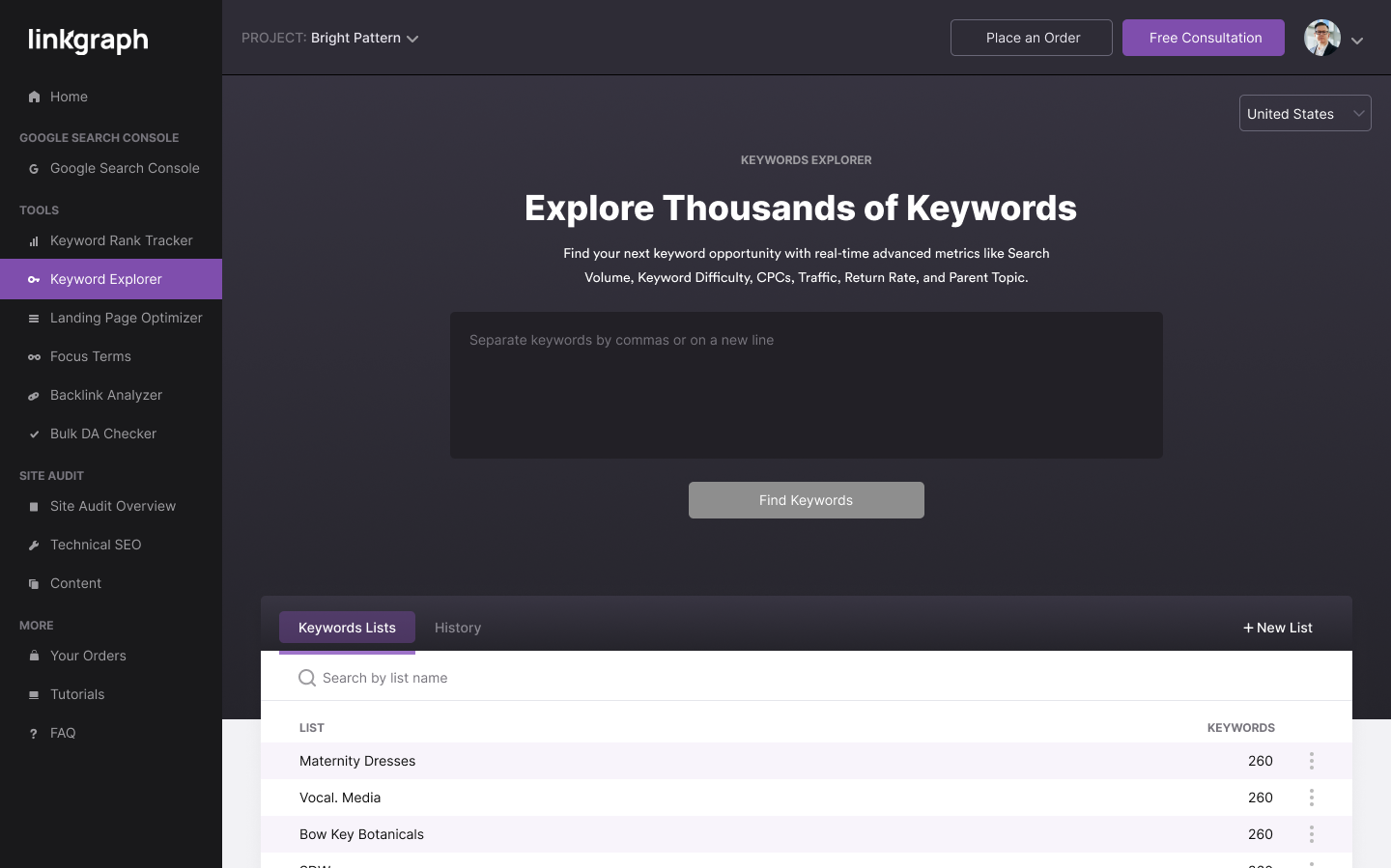
Why use LinkGraph’s Backlinks Checker?
Backlink Analysis Case Studies
Learn more about how LinkGraph has helped clients understand their backlink profiles with our Google backlink checker and our backlink profile audits.
Evaluating Backlink
Anchor Text
Google looks to anchor text, as well as the text surrounding the anchor text, to understand the relevance of the linked page. Google doesn’t want users linking to pages that have no topical relevance to the previous page, and will be suspicious of websites that have many links with irrelevant, unnatural, or even explicit anchor texts.
When another site links to yours, the clickable text in the hyperlink should read naturally on the page. Too many exact-match anchor texts, or anchor text that includes the exact keyword you’re trying to rank for, looks suspicious to Google. This is why it is particularly important in any link building campaign to think about the anchor text type as well as the quality of the websites where you earn your backlinks.
A healthy backlink profile will have a range of anchor text diversity — from branded anchors, to generic anchors, to partial-match. Not all webmasters will link to your website in the same way, so a diversity of anchor text actually improves your backlink profile overall. For more information about anchor text, read our blog post on how anchor text diversity can benefit your backlink profile.
Backlink Analyzer FAQ
Use a link explorer tool of some kind to evaluate the link url and referring domain. There are many tools out there — ahrefs, semrush, or Majestic SEO — but LinkGraph offers the most comprehensive tools with engaging interfaces. LinkGraph clients have access to unlimited reports so they check their backlink profiles often.
Regardless of your domain link, domain authority is the best measurement of link quality. Dot com, dot edu, and dot co are the most popular top-level domains, but they can all have varying levels of domain authority. The actual page metrics that matter the most for backlink quality are the Moz DA score, Page Rank, and website traffic.
Most likely, your home page will earn the most backlinks over the course of time, but it’s important to earn links to other pages on your site as well. Every landing page on your website should target a different keyword, creating more opportunities for users to find you through their free search queries on Google. You can use blog content to target additional keywords and earn new backlinks, but make sure to avoid duplicate content and ensure that all of your web pages follow the best practices of on-page SEO.
Like the Moz open site explorer, semrush, cognitiveseo, or seo spyglass, we offer cutting-edge software site explorer and SEO tools to provide you data insights into your deep links and backlink profile. But unlike companies like seo spyglass and cognitiveseo, we also offer fully managed SEO campaigns. We are a full-service digital agency that can help you leverage every part of Google engine optimization. We will help you identify the right page or pages on your site for link building campaigns as well.
Our custom dashboard gives you notifications on all of the technical elements of your site, from meta tags to PageSpeed Insight scores. We will identify thin or duplicate content, improve your page load times, add schema.org markup, and more.
Unlike other companies like Cognitiveseo or Kerboo, we can also help you implement the on-page improvements in your content and HTML back-end to make you appear more often in search (and even higher in Alexa traffic rank!) Start ranking for more keywords with the expertise of our on-page strategists.
Make sure you read our negative SEO attack ebook as well as our link building ebook to learn more about all of the powerful data provided by a backlink analysis tool. In these resources, you can learn many other tactics to remove toxic links from disavow files to blocking referring ips that send an influx of toxic links. Read the ebook to learn more.
Other tools like seo spyglass and cognitiveseo have more limited dashboards, preventing you from understanding the data at a granular level that empowers you to make off-site improvements right away.
Our link building ebook will teach you how to safely increase your site authority through strategies that are Google compliant and white-hat. Learn more about all of our favorite content marketing strategies for earning new links from authoritative, high-quality websites.
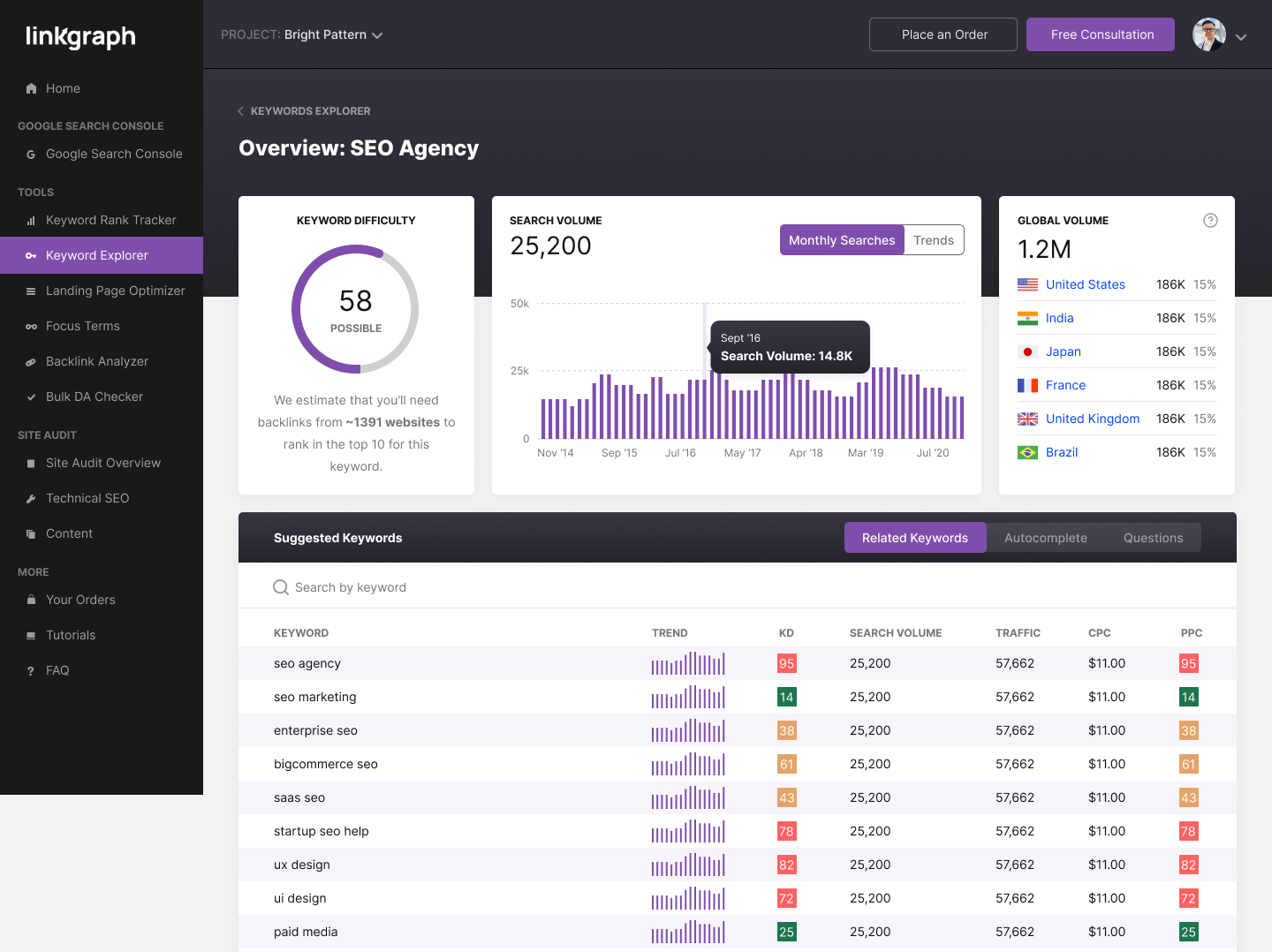
Why you should perform a backlink analysis
If you have never taken a closer look at your backlink profile, it could reveal some key insights about your website’s performance in search engine results. If you’ve struggled to earn keyword rankings and site traffic but have made the on-page optimizations necessary to improve SEO, you may need to focus more on what’s happening off-site. A backlink audit can help you identify your strengths and weaknesses so you can refine your SEO strategy to produce better results. All it takes is a simple backlink analysis to get started.
Why should you work with LinkGraph for your Enterprise SEO














































































